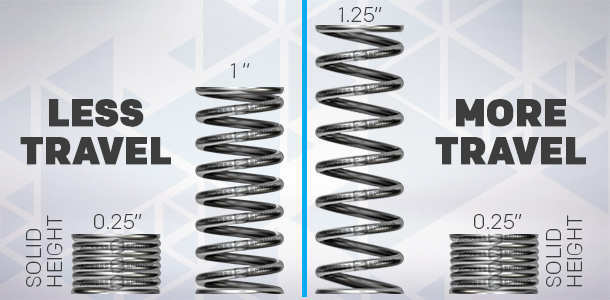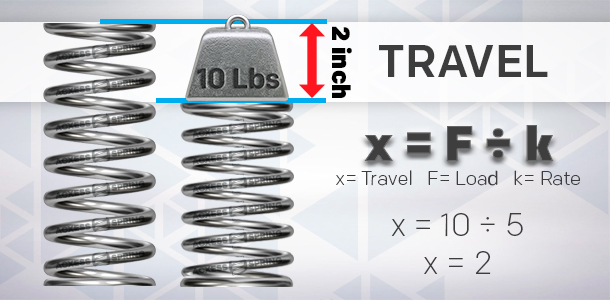Compression Spring Travel
Definition - The distance of deflection between the free length and a required loaded height when a spring is compressed.
A compression spring’s elasticity is based on its physical dimensions. Using these measurements and the material type properties, you can calculate potential spring compression. The maximum spring compression is the realistic value based on your spring’s current dimensions.
Potential Spring Compression
Potential compression will tell you the travel you can get out of a spring with a longer free length but with all other current dimensions. It is calculated without considering the distance between the solid height and the free length. This means that this is not necessarily what your current spring design achieves but what it can potentially achieve should you increase your spring’s free length.
Maximum Spring Compression
Maximum spring compression is the real-time specification for the amount of travel you will achieve out of your spring. It is the result of subtracting the travel distance between the free length and the solid height. This only applies if your spring’s physical dimensions give it the elasticity necessary to travel to solid height.
There are cases where both the potential spring compression and the maximum spring compression considering solid height are both the same value. This will either be because you’ve already adjusted the free length to use up all of the travel available, or because your spring’s elastic limit doesn’t allow it to deflect down to solid height so there is no extra deflection to be achieved.
The following spring has the same dimensions except for the free length

Calculate Distance Traveled
To calculate the distance traveled your spring will achieve under a specific load, you will need to know your spring rate. Spring rate is your spring’s overall force measured in amount of load needed for one unit of distance traveled. Therefore, you’ll need to divide the load by the spring rate.
x = F ÷ k Travel = Load ÷ RateFormula Values
- x = travel
- F = Load
- k = Rate






